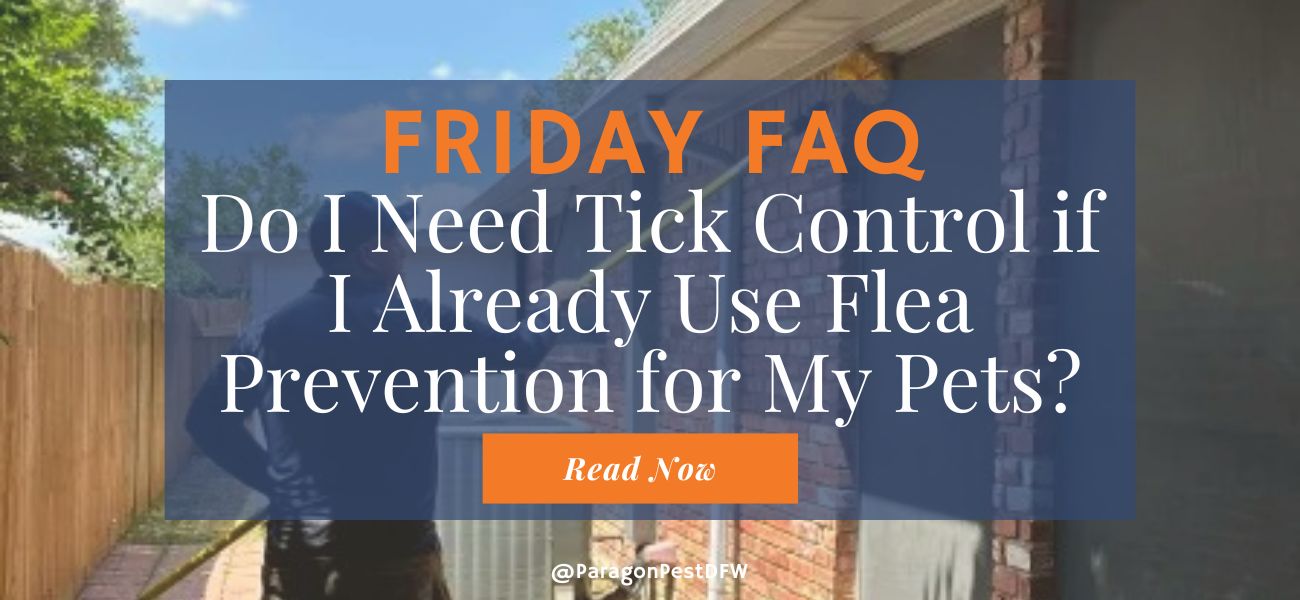Friday FAQ: Do I Need Tick Control if I Already Use Flea Prevention for My Pets?
We’re closing out Tick Awareness Week with one of the most common questions we get from pet owners in the DFW area:
“Do I really need tick control if my pets are already on flea and tick prevention?”
It’s a great question — and the short answer is: Yes.
Here’s why.
🧬 Vet-Prescribed Prevention Only Protects the Animal
When your dog or cat takes a chewable, wears a collar, or receives a topical treatment, that protection is internal or on-the-skin only.
It helps kill ticks once they bite or attach — but it doesn’t stop ticks from being present in your yard, or from trying to latch on in the first place.
In other words, your pet is protected — but your family, your guests, and your yard are still at risk.
🌿 Environmental Tick Control Helps Stop the Problem at the Source
Ticks don’t live on animals full-time.
They spend most of their lives in grass, brush, mulch, and shady areas, waiting to attach to a host. A single tick can spend months questing — a behavior where it perches on tall grass with its legs outstretched, waiting for something warm-blooded to pass by.
Yard treatments help reduce the overall tick population in the environment, so your pet (and you) are less likely to encounter them at all.
🐾 The Best Protection Is a Combined Approach
Tick control isn’t about choosing between vet care and pest control — it’s about using both to cover all your bases:
Veterinary prevention = Protection for the individual pet
Yard treatments = Protection for the environment your pets (and family) explore daily
Together, they give you the best chance of avoiding bites, disease transmission, and indoor hitchhikers.
✔️ How Paragon Covers Tick Control
Paragon Pest Control includes tick coverage as part of our General Pest Quarterly (GPQ) plan — as long as there’s no active infestation when you sign up.
If you’re already seeing ticks on your property, we recommend a targeted one-time treatment first (similar to our flea services) to bring the activity under control before moving to maintenance.
Because keeping your pets safe means keeping your yard safe, too — and we’re here to help with both.


